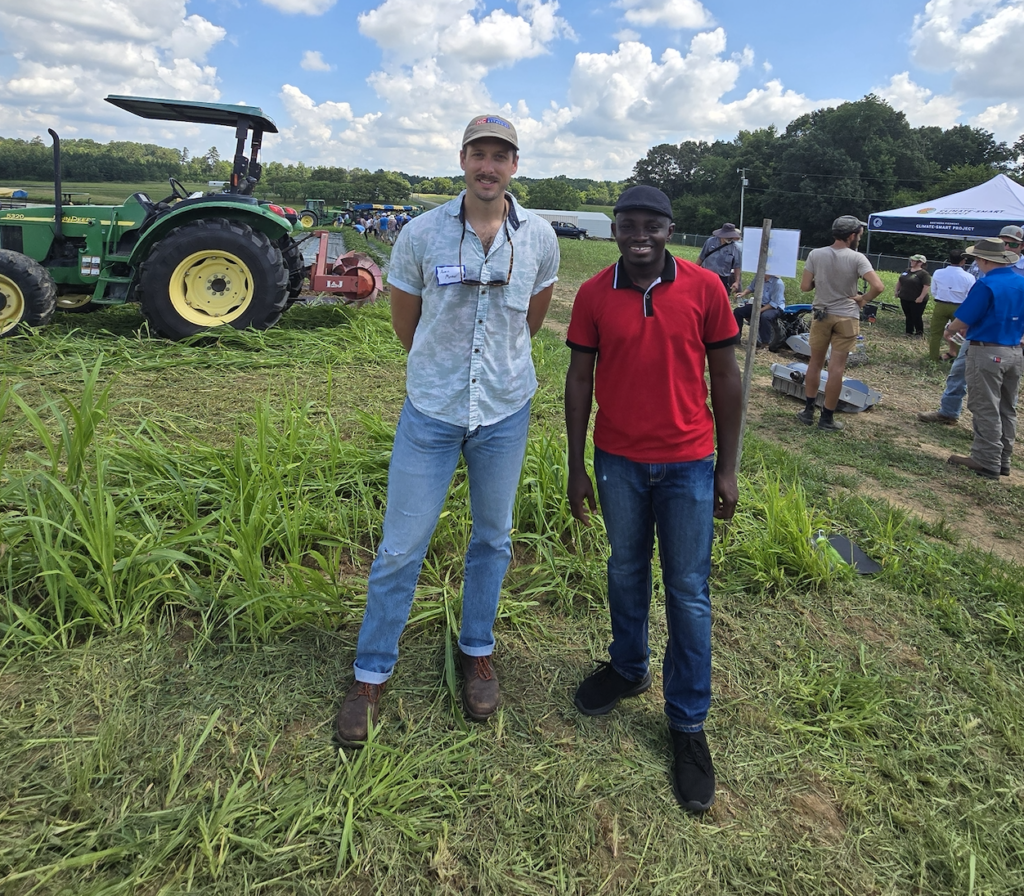Conservation Agronomy Team Attends Farmers Field Day Event in Greensboro, Participates in Panel Discussion
go.ncsu.edu/readext?1015187
en Español / em Português
El inglés es el idioma de control de esta página. En la medida en que haya algún conflicto entre la traducción al inglés y la traducción, el inglés prevalece.
Al hacer clic en el enlace de traducción se activa un servicio de traducción gratuito para convertir la página al español. Al igual que con cualquier traducción por Internet, la conversión no es sensible al contexto y puede que no traduzca el texto en su significado original. NC State Extension no garantiza la exactitud del texto traducido. Por favor, tenga en cuenta que algunas aplicaciones y/o servicios pueden no funcionar como se espera cuando se traducen.
Português
Inglês é o idioma de controle desta página. Na medida que haja algum conflito entre o texto original em Inglês e a tradução, o Inglês prevalece.
Ao clicar no link de tradução, um serviço gratuito de tradução será ativado para converter a página para o Português. Como em qualquer tradução pela internet, a conversão não é sensivel ao contexto e pode não ocorrer a tradução para o significado orginal. O serviço de Extensão da Carolina do Norte (NC State Extension) não garante a exatidão do texto traduzido. Por favor, observe que algumas funções ou serviços podem não funcionar como esperado após a tradução.
English
English is the controlling language of this page. To the extent there is any conflict between the English text and the translation, English controls.
Clicking on the translation link activates a free translation service to convert the page to Spanish. As with any Internet translation, the conversion is not context-sensitive and may not translate the text to its original meaning. NC State Extension does not guarantee the accuracy of the translated text. Please note that some applications and/or services may not function as expected when translated.
Collapse ▲The NC State University Conservation Agronomy team on Tuesday, July 9 participated in a farmer field day organized by the Southern Piedmont Climate-Smart Project at the North Carolina Agricultural and Technology State University (N.C. A&T) Farm Pavilion in Greensboro. The climate-smart field day event offered educational opportunities for farmers enrolled in the Southern Piedmont Climate-Smart Project and others to learn about climate-smart farming practices such as roller crimping, plasticulture, and more.
The event was organized by the Rodale Institute, N.C. A&T, NC State University, and other partners. There were equipment demos in the field, panel discussions, and networking opportunities. Participants witnessed a demonstration of how a roller-crimper can be used to terminate cover crops, among other demonstrations. A roller-crimper was effectively used to terminate a pearl millet cover crop through a mechanical process that crushed and crimped the stems, leading to the plant’s death without the use of chemicals. Using a roller-crimper for terminating cover crops is considered a sustainable and eco-friendly method when preparing the field for the next planting season.

Extension Associate Austin Menker and Summer Student Worker Joseph Opoku Gakpo at the Farmers Field Day
Conservation Agronomy Extension Associate Austin Menker participated in a panel discussion that sought to expose farmers to available funding opportunities and resources that they could take advantage of to improve their activities. Menker introduced farmers to the Economic Decision Tools for Cover Crops developed by the Precision Sustainable Agriculture program. The program, led by Dr. Teven Mirsky of the U.S. Department of Agriculture’s Sustainable Agricultural Systems Laboratory in Maryland and Dr. Chris Reberg – Horton of the Plant Sciences Initiative at NC State University, created the Cover Crop Economic Decision Tool to help farmers predict how cover cropping may impact yield and revenue.
The tool provides farmers with appropriate knowledge to make informed decisions on cover cropping practices. Users key in various details about their operations onto the online platform, including the cost of labor, diesel, tractor operation, fertilization, and erosion prevention. They additionally key in their location, financial assistance received, specific cover crop species they are growing, seedbed preparation practices, planting and termination methods, and other relevant factors. The tool then calculates the percentage changes in crop production over three years, as well as changes in yield and net income.
“The economic decision tool is really going to help you break down (the figures) and (allows you to) see how this is impacting you financially and guide your management to make it more profitable for you,” Menker said. He encouraged the farmers to use the tool and urged them to share it with colleague farmers, so they are able to make informed decisions on the use of cover crops.


